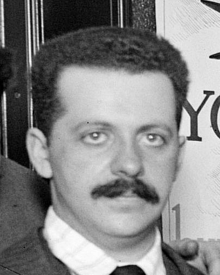Continuing in this post with my outline of Celine-Marie Pascale’s article The Weaponization of Language. This post addresses her section on a favourite topic of mine, one that I’ve posted many times about, Propaganda. I’ve fleshed out some of Pascale’s points by going back to her citations and quoting directly from them. (Other links point to the online articles themselves where available.)
Propaganda might be most commonly associated with the effort of governments to manipulate information and sentiments to gain public support for specific agendas (Messeryly, 2015). In the United States, the term propaganda has been used to characterize the kinds of interventions advanced by the Soviet Union. When the same critical lens is turned toward modern liberal political democracies, propaganda is often referred to as manufacturing consent (Ellul, 1973; Herman and Chomsky, 2002). In the United States it has been used to intensify capitalist impulses. Sigmund Freud’s nephew, Edward Bernays, developed propaganda (which he referred to as public relations) as a means to compel people to buy products they did not need. Propaganda’s sole task is to shape desires and dispositions. Through propaganda Bernays also pushed back on all forms of regulation and in the US made free-market capitalism synonymous with democracy. Bernays’ propaganda machine was so effective that it inspired Joseph Goebbels, the Reich Minister of Propaganda in Nazi Germany (Curtis, 2002).

Do click on and view that Curtis, 2002 link at the end of the above paragraph if you haven’t already seen it. It is a BBC documentary by Adam Curtis, 58 minutes long, and part 1 of a series of 4 that survey the way government and business have used the theories of Sigmund Freud to control the masses in an age of “democracy”. I’ve covered aspects of what he addresses in other posts here, in particular the influence of Freud’s nephew, Edward Bernays. Bernays, we learn from a close family member in the doco, despised the masses, thought of them as “fools”. No wonder, when it shows how he became extremely wealthy by showing governments and businesses how to manipulate them.
But back to our Pascale article and to begin with the more obvious:
Some tools frequently used by propaganda are
- simplicity
- repetition
- strong emotions
- easily understood symbols
We have come to expect the abundance of “slogans, images, and catchphrases” at election time.
With consistent exposure over time, propaganda becomes a language that thinks for you (Klemperer, 2013).
I looked up the Klemperer reference. Here are a few extracts from Victor Klemperer’s The Language of the Third Reich:
Continue reading “The Weaponization of Language (Part 3) – Propaganda”
